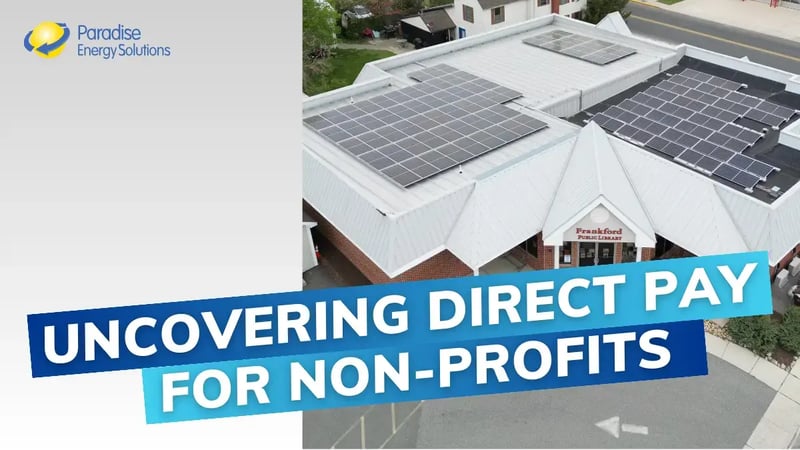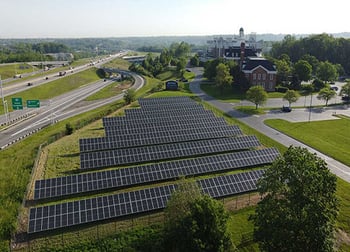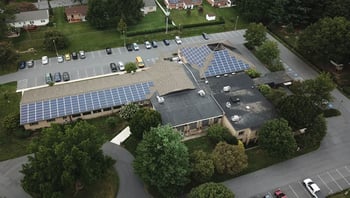
Until recently, it was difficult for tax-exempt organizations to go solar. Most of the cost-saving incentives for solar panel installations came in the form of tax credits, which they were not eligible for. That meant many non profits opted to go solar through PPAs, leases, or other third-party means, limiting their return on investment.
But 2022’s Inflation Reduction Act included a new program to make solar ownership more affordable for tax-exempt entities: direct pay (also known as elective pay).
With direct pay, the federal government will cover 30% or more of the solar installation cost for qualifying systems, even though those organizations don’t have tax liability.
This is a game-changer for nonprofits and local government organizations. However, for your organization to make the most of this generous incentive, there are some things you need to know and potentially avoid.
Jump ahead to the sections discussed below:
- How Does The Direct Pay Option Work?
- How to Apply and Use the Direct Pay Option
- Who is Eligible for the Direct Pay Option?
- Possible Challenges Non-profit Organizations Should Watch Out For with Direct Pay
- Using Solar to Boost Your Organization
How Does The Direct Pay Option Work?
The direct pay option grants qualifying non-profits and tax-exempt entities significant financial incentives for installing solar panels. While they still don’t technically qualify for the Solar Investment Tax Credit, they’ll be paid their equivalent of the taxes instead of a reduction in their owed taxes (which they don't have).
 The exact percentage of costs that direct pay will cover will vary based on your organization and your solar project, but it will likely be at least 30% of the total installation cost. Direct pay can increase by 10% increments if conditions are met for the tax credit adders, which are for using domestic content, being in an energy community, or being in a low-income area.
The exact percentage of costs that direct pay will cover will vary based on your organization and your solar project, but it will likely be at least 30% of the total installation cost. Direct pay can increase by 10% increments if conditions are met for the tax credit adders, which are for using domestic content, being in an energy community, or being in a low-income area.
Another component that could impact the amount of the direct payment is the system size. Most non-profits will install systems under 1 MW in size, meaning they qualify for the 30% and any adders they meet the requirements for.
However, for larger systems (1MW+), there are domestic content requirements they must meet. If the domestic manufacturing requirements are not met on these larger systems, they’ll receive 85% of the ITC in 2025 and 0% in 2026.
How to Apply and Use the Direct Pay Option
The process for obtaining the direct pay will follow these steps:
- Determine Eligibility: Ensure your solar project qualifies for direct pay. It’s a good idea to consult a tax advisor to ensure you’re interpreting the information correctly.
- Design & Install the System: Choose a reputable solar installer to create and construct your system.
- Determine Tax Year & Due Date: The year that the system goes online designates which year’s taxes you’ll have to register for direct pay. In other words, if your system goes online in 2025, you must have it on your return for 2025. Typically, returns are due 4.5 months after the close of the year, so that would be May 15, 2025. If your organization doesn’t have a filing requirement, you may receive an automatic 6-month extension.
- Complete the Pre-Filing Registration: Before filing your tax return, you’ll have to complete a registration form with the IRS on their online portal. It’ll ask for information about the system and your organization. Upon completion, you’ll get a registration number.
- File Tax Return & Get Paid: With a valid registration number, you can file your tax return (normally a 990 T) for the year the system was placed into service. Then, you’ll receive your payment either electronically or through the mail.
Important note: The statute mentions that organizations may not receive the payment until the return due date. This could be a potential issue, as your solar installer will likely need to be paid prior to receiving this payment.
You and your tax advisor need to complete much of this process. Your solar installer should be there to provide necessary documentation and invoices, as well as answer any questions they can. However, solar installers aren’t accountants, and something that complicated is best left to the tax experts!
Who is Eligible for the Direct Pay Option?
Direct pay can shave off a large chunk of your solar installation costs, but not everyone will qualify. Generally, this program aims to serve organizations that don’t have tax liability. This typically includes:
- State, local, and territorial government agencies
- 501(c) organizations (churches, private schools, community organizations, etc.)
- Tribal and Native entities
- Rural energy cooperatives
A good resource for ensuring your organization qualifies is The White House’s page on direct pay.
 As a quick note: organizations that qualify for the IRA’s other new program, transferability, won’t be eligible for direct pay. Transferability is geared towards organizations that are for-profit enterprises but do not have tax equity for various reasons. Instead of receiving a direct payment, they can transfer the tax credit to another entity for a price.
As a quick note: organizations that qualify for the IRA’s other new program, transferability, won’t be eligible for direct pay. Transferability is geared towards organizations that are for-profit enterprises but do not have tax equity for various reasons. Instead of receiving a direct payment, they can transfer the tax credit to another entity for a price.
Your organization will only be eligible for one of these, but not both. If you’re a non-profit, government entity, or another tax-exempt organization, chances are you’ll have to take the direct pay route.
Possible Challenges Non-profit Organizations Should Watch Out For with Direct Pay
Shaving 30% off your solar installation costs can be huge in terms of the long-term return on the investment.
But it’s not all roses. There are a few things nonprofits need to know before banking on this incentive. Beware of these pitfalls: Earmarked Funding and Gaps In Funding.
Earmarked Funding
Direct pay won’t cover your costs if you already have substantial funds earmarked for the project. In other words, donations, grants, and the 30% (or more) direct pay amount can’t exceed 100% of the project’s cost.
Here’s a quick example. Say your system is $50K. You earmark $25K of donations for the solar install and qualify for a $5K grant. With the 30% direct pay, you’d be at $60K, meaning there’s an excess of $10K. In this case, your direct payment would drop to $20K (just enough to cover the cost of the system). It is crucial to exercise caution in this matter, as this process will be subject to auditing.
While we can’t say for sure, using money from the general operating fund would likely be okay, but specifically earmarking the donations for solar could decrease your direct pay amount.
Gaps in Funding
Direct pay returns a large portion of the system’s cost to your organization, making solar more accessible for non-profits and public buildings. However, there’s the potential for a long period between when that money is spent and when you’re compensated.
The worst-case scenario is that you’ll wait up to three years for reimbursement.
You must file a tax return for the year your system is placed online, and you’ll have to wait 4.5 months after that year ends to file your tax return. Once filed, it could take up to a year or even 1.5 years to receive the direct payment. Depending on when you installed your system, that could be up to three years of waiting, which can understandably create financial challenges.
The good news is that several financing companies are working on bridge financing options to help in this scenario. Learn more about an option offered by CollectiveSun in the video below.
Using Solar Energy to Boost Your Non-profit Organization
Solar energy is an easy way to do an otherwise difficult thing: reduce a fixed cost. By owning your own source of free electricity, you can drastically cut a monthly bill for decades.
However, it does require an upfront investment, and the direct pay option greatly reduces the amount needed.
Take advantage of this cost-saving incentive for the federal government and take control of your energy costs with a solar energy system.




